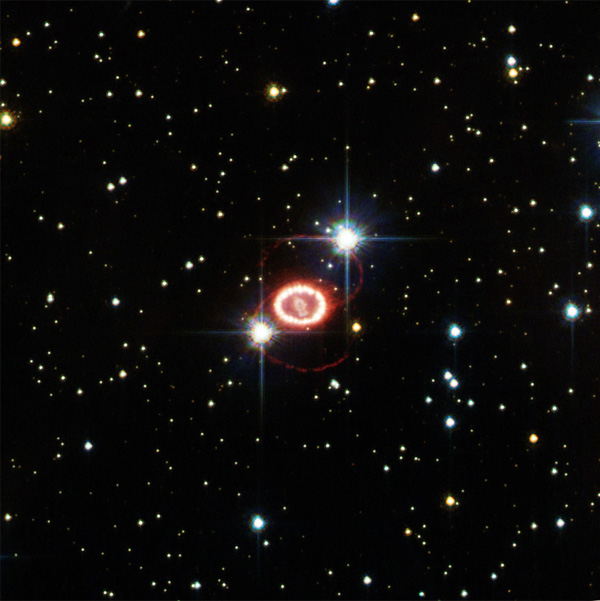Supernova 1987A
The discovery of Supernova 1987A was a great opportunity for detailed observation of the dynamics of a supernova. This supernova was unusual in that it did not rise abruptly to its maximum brightness, but paused briefly before increasing its luminosity by another factor of ten. It increased for about 85 days and then began a gradual decline which was more characteristic of other observed supernovae.
Another unique feature about this supernova is that the star which exploded had been observed and named Sk-69202. It was a blue supergiant presumed to have a mass of about 20 solar masses.
Almost coincident with the observation of the supernova, a burst of neutrinos were observed on the Earth, providing further information for modeling supernovae and providing another test for the mass of the neutrino.

This image of the remnant of Supernova 1987a was taken by the Hubble Space Telescope (Picture credit ESA/Hubble & NASA). The image was taken in December 2006 with Hubble's Advanced Camera for Surveys. The field of view is about 25x25 arcseconds. Note the two glowing loops and the inner circle of glowing material. ESA suggests that the loops and rings are probably material ejected from the star earlier in its history that is now being illuminated by the supernova and its shockwave. A neutron star is expected as a remnant of the supernova, but it has not been detected.
"The pink object in the centre of the ring is debris from the supernova blast. The glowing debris is being heated by radioactive elements, principally titanium 44, created in the explosion. The debris will continue to glow for many decades."
Reference: Hubble website
|


